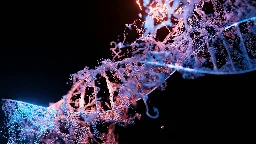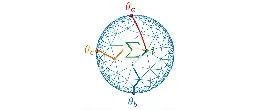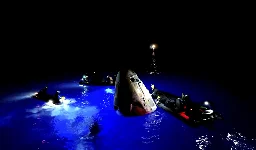Phys.org
- phys.org Researchers find golden eagles improve their flight skills with age
Researchers at the Max Planck Institute of Animal Behavior in Germany, in collaboration with the Swiss Ornithological Institute in Switzerland and the University of Vienna in Austria, investigated how young golden eagles improve their flight skills as they age.

- phys.org Optogenetic control reveals collective cell behavior
New research led by the Institute for Bioengineering of Catalonia (IBEC) has studied the migratory movement of groups of cells using light control. The results show that there is no leader cell that directs the collective movement, as previously thought, but that all cells participate in the process...

- phys.org The 15-minute city: Why time shouldn't be the only factor in future city planning
The 15-minute city, a concept where essential services are accessible within a 15-minute walk or bike ride, has become increasingly popular in urban planning in recent years. This is because it offers solutions to several pressing challenges in urban areas, such as traffic, pollution, social isolati...

- phys.org Energy-saving computing with magnetic whirls
Researchers at Johannes Gutenberg University Mainz (JGU) have managed to enhance the framework of Brownian reservoir computing by recording and transferring hand gestures to the system that then used skyrmions to detect these individual gestures.

- phys.org Designing a better water filter: A fabric-like filter to remove tiny plastics and lead from drinking water
Water filters on the market today can remove some contaminants, but they're not designed to capture microplastics. In fact, some of them may actually add small plastics into drinking water during the filtration process. What's worse is these microplastics can cause inflammation, increase the risk of...

- phys.org Comprehensive model uses airborne LiDAR data to predict walking travel times with unprecedented accuracy
You're a hotshot working to contain a wildfire. The conflagration jumps the fire line, forcing your crew to flee using pre-determined escape routes. At the start of the day, the crew boss estimated how long it should take to get to the safety zone. With the flames at your back, you check your watch ...

- phys.org New 'grumpy' fish species discovered in the Red Sea
A team of researchers at the King Abdullah University of Science and Technology and the University of Washington has discovered a new species of fish that seems perpetually displeased. The researchers decided to call this new species the grumpy dwarfgoby.

- phys.org Tunable nonlinear Hall effect observed at room temperature in tellurium
A research team has discovered significant nonlinear Hall and wireless rectification effects at room temperature in elemental semiconductor tellurium (Te). Their research is published in Nature Communications.

- phys.org Researchers find evidence that bumblebees make the same memory errors as humans
Psychologists at the University of Stirling have carried out research that shows wild bumblebees make the same memory errors as humans.

- phys.org Earth may have had a ring system 466 million years ago
In a discovery that challenges our understanding of Earth's ancient history, researchers have found evidence suggesting that Earth may have had a ring system that formed around 466 million years ago, at the beginning of a period of unusually intense meteorite bombardment known as the Ordovician impa...

- phys.org Trimetallic-based nanocarriers method shows promise for visualized idiopathic pulmonary fibrosis therapy
A research group from Ningbo Institute of Materials Technology and Engineering (NIMTE) of the Chinese Academy of Sciences (CAS) developed a novel method for idiopathic pulmonary fibrosis (IPF) therapy by transplanting mesenchymal stem cells (MSCs), which improved the therapeutic efficacy and realize...

- phys.org Modified nano-sized cell particles found to boost cancer immunotherapy, reduce side effects
Immunotherapy is a type of cancer treatment that uses the body's own immune system to help fight cancer. This is by stimulating the immune response to recognize and attack cancer cells more effectively. The treatment involves using substances that boost the immune system, teaching immune cells to ta...

- phys.org Virtual laboratory allows scientists to simulate specific decreases in gene activity
Imagine you're looking at millions upon millions of mysterious genetic mutations. With CRISPR gene-editing technology, a select few of these mutations might have therapeutic potential. However, proving it would mean many thousands of hours of lab work. Just figuring out which ones are worth explorin...

- phys.org New hypothesis suggests Mars's unique shape may be due to long lost moon
An astronomer at the U.S. Naval Observatory has developed a hypothesis to explain the unique shape and terrain of Mars. He suggests both are due to a long-lost moon. Michael Efroimsky has published a paper outlining the hypothesis on the arXiv preprint server.

- phys.org Beyond displays: Liquid crystals in motion mimic biological systems
Liquid crystals are all around us, from cell phone screens and video game consoles to car dashboards and medical devices. Run an electric current through liquid crystal displays (LCDs) and they generate colors, thanks to the unique properties of these fluids: rearrange their shape, and they reflect ...

- phys.org New tidally tilted pulsator discovered by astronomers
Astronomers have detected a new tidally pulsator star (TTP) by analyzing the data from NASA's Transiting Exoplanet Survey Satellite (TESS). The newfound pulsator, designated TIC 435850195, belongs to the rare class of tri-axial TTPs. The finding was detailed in a research paper published September 5...

- phys.org Symmetry model sheds light on the chemistry surrounding peptide helices
Helices are structures found naturally in many important molecules, such as proteins. These helices possess a twist that depends on the arrangement of their basic components. By understanding how a helix is formed, we can gain deeper insights into how these structures influence the behavior of prote...

- phys.org How Olmec elite helped legitimize their political power through art
In an article recently published in Latin American Antiquity, Dr. Jill Mollenhauer argues that the Gulf Lowland Olmec, one of Mesoamerica's earliest major civilizations, sometimes incorporated aesthetic and ritual practices associated with their rock art into their sculptures. She argues that this a...

- phys.org Paleontologists find omnivorous ancestor of the giant panda, revealing it was not always just a bamboo eater
The Hammerschmiede fossil site in southern Germany has yielded finds from about 11.5 million years ago that have rewritten evolutionary history. The sole species of bear discovered to date at the site was a relative of the giant panda. Its diet, however, more closely resembled the mixed diet of toda...

- phys.org Research team uses terahertz pulses of light to shed light on superconducting disorder
A team of researchers from the Max Planck Institute for the Structure and Dynamics of Matter (MPSD) in Hamburg, Germany, and Brookhaven National Laboratory in the United States has demonstrated a new way to study disorder in superconductors using terahertz pulses of light.

- phys.org Theoretical physicists develop method to model a central theory of quantum gravity in the laboratory
Gravity is no longer a mystery to physicists—at least when it comes to large distances. Thanks to science, we can calculate the orbits of planets, predict tides, and send rockets into space with precision. However, the theoretical description of gravity reaches its limits at the level of the smalles...

- phys.org Using sunlight to turn greenhouse gases into valuable chemicals
McGill University researchers have harnessed the power of sunlight to transform two of the most harmful greenhouse gases into valuable chemicals. The discovery could help combat climate change and provide a more sustainable way to produce certain industrial products.

- phys.org Machine learning powers discovery of new cryoprotectants for cold storage
Scientists from the University of Warwick and the University of Manchester have developed a cutting-edge computational framework that enhances the safe freezing of medicines and vaccines.

- phys.org Astronomers detect black hole 'starving' its host galaxy to death
Astronomers have used the NASA/ESA James Webb Space Telescope to confirm that supermassive black holes can starve their host galaxies of the fuel they need to form new stars. The results are reported in the journal Nature Astronomy.

- phys.org Physicists achieve high selectivity in nanostructures using selenium doping
Physicists from the National University of Singapore (NUS) have achieved controlled conformational arrangements in nanostructures using a flexible precursor and selenium doping, enhancing material properties and structural homogeneity. Their method advances on-surface synthesis for the design and de...

- phys.org Contrail avoidance is less likely to damage climate by mistake than previously thought, researchers find
A new study allays fears that rerouting flights to avoid forming climate-warming contrails could result in inadvertently making climate warming worse.

- phys.org Exceptional new fish fossil sparks a rethink of how Earth's geology drives evolution
Coelacanths are deep-sea fish that live off the coasts of southern Africa and Indonesia and can reach up to two meters in length. For a long time, scientists believed they were extinct.

- phys.org Genomics reveals sled dogs' Siberian lineage
New research co-led by Cornell University examines thousands of years of Arctic sled dog ancestry and reveals when and how Siberian and Alaskan sled dogs' DNA mixed.

- phys.org Tech billionaire returns to Earth after first private spacewalk
A billionaire spacewalker returned to Earth with his crew on Sunday, ending a five-day trip that lifted them higher than anyone has traveled since NASA's moonwalkers.

- phys.org Saturday Citations: Permian-Triassic mystery solved; cute baby sighted; the nine-day 2023 seismic event
This week, a billionaire made a spacewalk, archaeologists found a new, isolated Neanderthal lineage and the James Webb Space Telescope revealed the extreme outskirts of the Milky Way. And a few other things happened:

- phys.org Astronomers discover new planet in Great Bear constellation
Astronomers from the Nicolaus Copernicus University in Torun have discovered a new planet in the constellation of the Great Bear. It has a mass as much as 11 times that of Jupiter, orbits its star in 14 years and has a temperature of no more than minus 100 degrees Celsius.

- phys.org Flowers use adjustable 'paint by numbers' petal designs to attract pollinators, researchers discover
Flowers like hibiscus use an invisible blueprint established very early in petal formation that dictates the size of their bullseyes—a crucial pre-pattern that can significantly impact their ability to attract pollinating bees.

- phys.org Proteins involved in regulating the cell membrane could lead to new treatments
Scientists at Kyoto University's Institute for Integrated Cell-Material Sciences (WPI-iCeMS) have uncovered new details about how cells manage the distribution of lipids in their cell membrane. These lipids, known as phospholipids, are arranged in a bilayer of membranes, regulating entry and exit of...

- phys.org Studies on pigeon-guided missiles, swimming abilities of dead fish among Ig Nobles winners
A study that explores the feasibility of using pigeons to guide missiles and one that looks at the swimming abilities of dead fish were among the winners Thursday of this year's Ig Nobels, the prize for comical scientific achievement.

- phys.org Personal carbon footprint of the rich is vastly underestimated by rich and poor alike, study finds
The personal carbon footprint of the richest people in society is grossly underestimated, both by the rich themselves and by those on middle and lower incomes, no matter which country they come from. At the same time, both the rich and the poor drastically overestimate the carbon footprint of the po...

- phys.org Global warming is driving rapid evolutionary response in fruit flies, research suggests
Researchers from the UAB have observed that the rise in temperatures and episodes of heat waves in the past two decades has accelerated the presence of genetic variations that increase tolerance to high temperatures in populations of flies commonly found in European forests, the Drosophila subobscur...

- phys.org Climate change is accelerating extreme melting in Greenland with global impacts, says study
Climate change is accelerating the melting of ice in Greenland at an alarming rate, with serious implications not only for the Arctic, but also for the global climate, including Europe. According to a study led by researchers at the University of Barcelona, extreme melting episodes—periods when larg...

- phys.org Scientists discover crude oil decimates sea otter buoyancy
Sea otters are famed for their luscious pelts, but the fur almost led to their extinction. By 1938, only a tiny population of ~50 remained clinging to the central California coast. Since then, the mammals have battled back. However, the charismatic creatures are still at risk from crude oil spilled ...

- phys.org Energy transmission in quantum field theory requires information: Research finds surprisingly simple relationship
An international team of researchers has found a surprisingly simple relationship between the rates of energy and information transmission across an interface connecting two quantum field theories. Their work was published in Physical Review Letters on August 30.

- phys.org Early dark energy could resolve cosmology's two biggest puzzles
A new study by MIT physicists proposes that a mysterious force known as early dark energy could solve two of the biggest puzzles in cosmology and fill in some major gaps in our understanding of how the early universe evolved.
